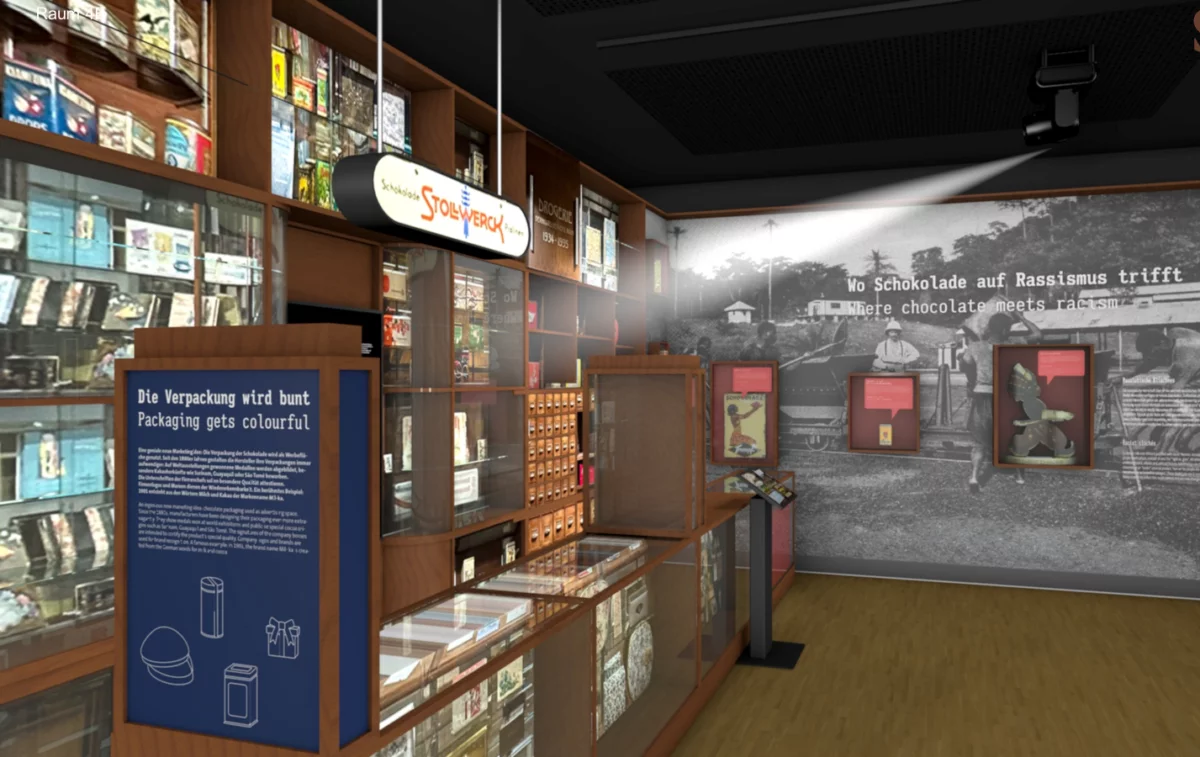Time travel of cocoa the new exhibition
The new exhibition invites you on an exciting journey of discovery through over 5,000 years of cocoa history. It starts with the origins in Ecuador and takes you all the way to modern chocolate production.


This year, the newly designed part of the exhibition on the cultural history of cocoa and chocolate will open step by step. The first room is now open: In a historic drugstore, the colorful world of chocolate goods from the late 19th to the 20th century is on display. The advertising clichés depict a nostalgic, supposedly ideal world.
A closer look
On closer inspection, however, it becomes clear that the supposedly ideal world in chocolate advertising is often depicted in the form of exoticizing and racist images. The exhibition therefore shows the historical connections between chocolate, colonialism and racism. The aim is to make historical injustice visible, as the idealized, supposedly ideal advertising world is based on the exploitation of people and resources in the global South.
Strong contrast
The juxtaposition of the historical advertising motifs with the reality of the colonial era is intended to highlight deeply rooted racist ideologies and their continuing effects.
Objects with racist depictions break through the romanticized, nostalgic perception of the chocolate world. These depictions can be identified as clearly racist by classifying and reflecting on them in the exhibition. Advertising objects with racist depictions are deliberately placed in front of a large photo wall. The motif shows men working on a cocoa plantation under the supervision of a colonial master. The contrast between the "beautiful" historical packaging and the brutal reality in the colonies places the advertising objects in a new context and makes people think.
Chocolate and colonialism
European colonial rule over Africa and other parts of the world was justified by racist theories that devalued non-white people. Advertising used this ideology to market colonial goods such as chocolate as "exotic". People defined as foreign and different are often depicted as caricatures, servants or "primitive savages". These images are disrespectful and offensive and must be critically scrutinized.
"Exoticism" in advertising is not harmless: these depictions show a world view based on devaluation and exclusion. Examples of sometimes very well-known advertising figures illustrate how racist and sexist ways of thinking are reflected in advertising.
And today?
Stereotypes like these continue to have an effect today. Seeing these depictions in their historical context allows us to question our own viewing habits. Images like these support discriminatory ideologies. The past provides important impulses to critically reflect on the present: How present are racism and sexism still in our everyday lives today? And what does this have to do with me?